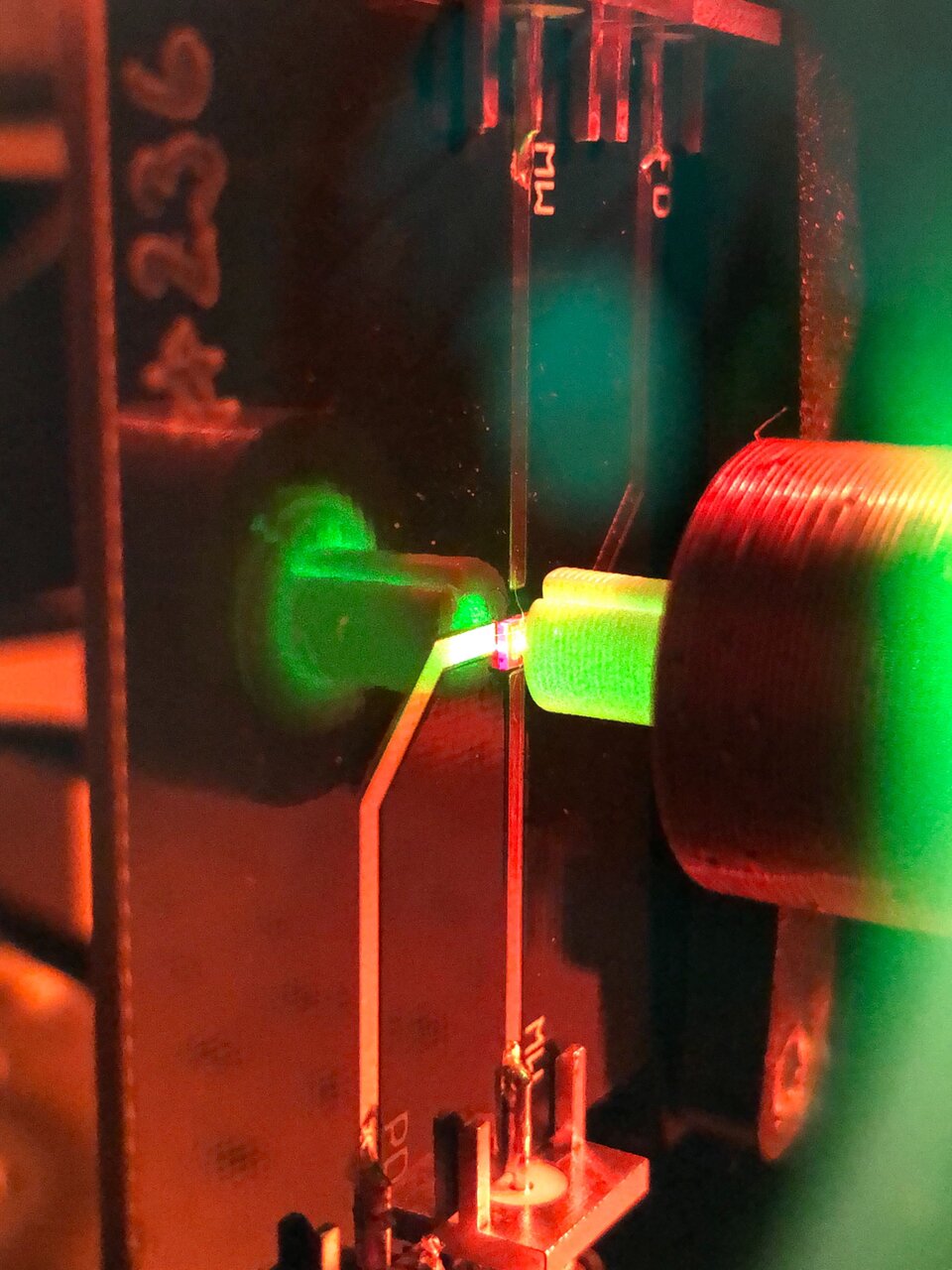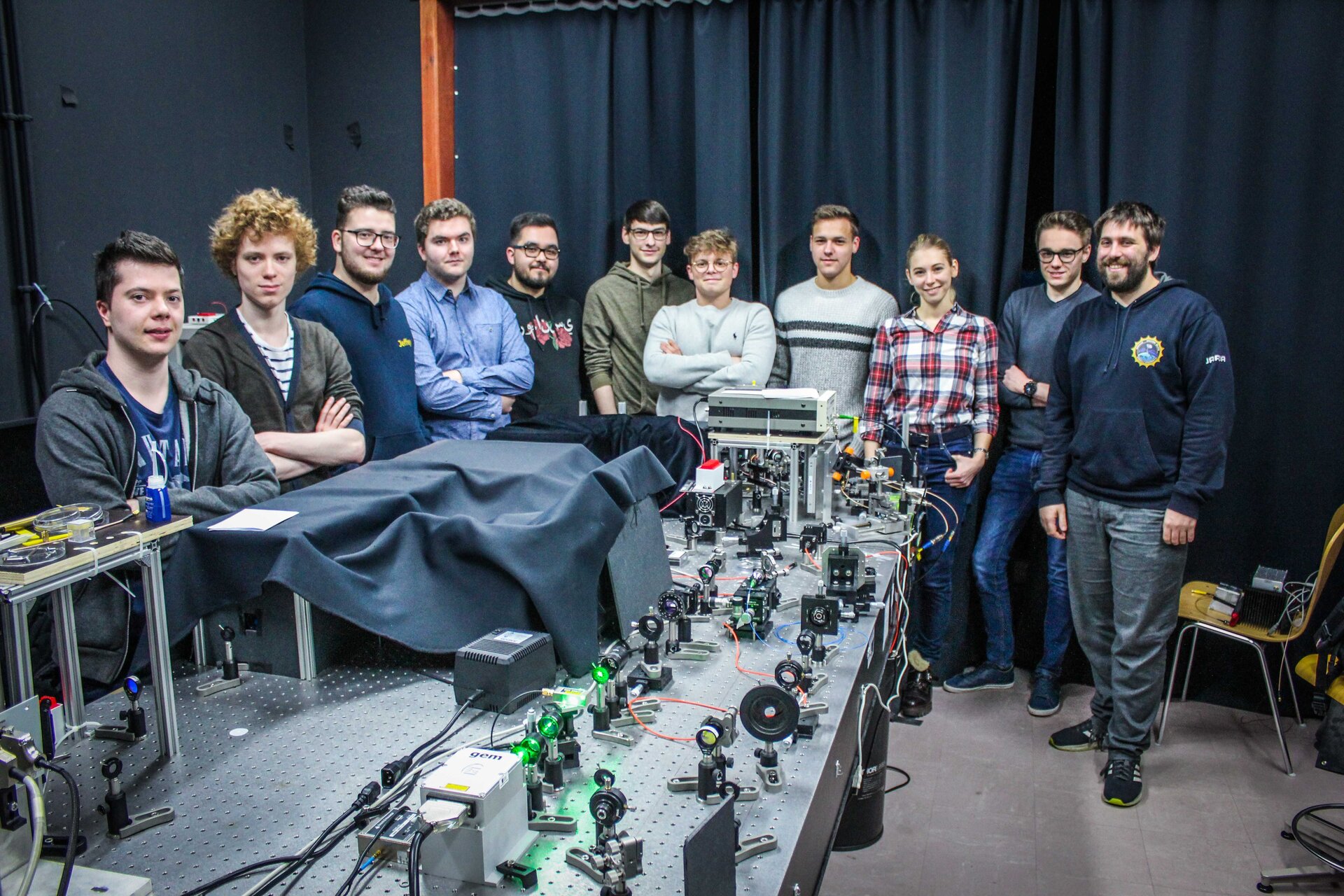Meet the team: Team OSCAR-QUBE
Team OSCAR-QUBE believe emerging quantum sensing techniques can change the way we see the world today. By developing new types of sensors that employ quantum detection principles based on diamond, they are developing magnetic field sensors with high sensitivity, wide dynamic range and a fast response to changes in the magnetic field, and that provide stable operation in harsh conditions.
Optical Sensors based on CARbon materials: QUantum BElgium
OSCAR-QBE is a team of 15 students from Hasselt University (Belgium) developing a new generation of magnetic field sensors working on quantum principles. This type of sensor is based on Photoelectric Detection of Magnetic Resonance (PDMR) of Nitrogen-Vacancy (NV) centers. This defect in the crystalline lattice of the diamond can be exploited as a magnetic field probe with unique properties such as sub-picotesla sensitivity, wide dynamic range (fT - mT), and fast response to the changes in the magnetic field (<200ns). Because NV centers are located in the diamond lattice along four different orientations, the sensor can be used for vector magnetometry. The resulting device can be used for many space and terrestrial applications.
| University | Hasselt University (IMO-IMOMEC), Belgium |
| Endorsing Professor | prof. dr. Milos Nesladek |
| Team Leader | Jaroslav Hruby |
| Team | Siemen Achten, Musa Aydoğan, Sam Bammens, Yarne Beerden, Boo Carmans, Jeffrey Gorissen, Maikel Kellens, Stef Loos, Jens Mannaerts, Maxim Princen, Leander Van Cappellen, Remy Vandebosch, Zander Vandelaer, Sebastiaan Vanspauwen |

Quantum technologies - The next frontier in technological advancement is not only quantum computing or encryption. Quantum sensing technologies enable the measurement of physical quantities using quantum properties of materials. This results in “digital” drift-free measurements. It enables the accurate measurement of external fields, with high sensitivity, across a broad frequency spectrum. Further development of this technology and the widespread use of quantum sensing will enrich both space and terrestrial applications, such as, for example, navigation, communication or healthcare, and might lead to new discoveries and space exploration.
How does the sensor work? The core of the sensor consists of a single crystal diamond containing the Nitrogen-Vacancy (NV) centers – paramagnetic point defects in a crystallographic lattice. Traditionally the NV center spin states are read optically. However, in their experiment, OSCAR-QUBE is using a photoelectric readout spin state method that allows for miniaturization of the device, which is beneficial for space applications. To make PDMR possible, electrodes and a microwave antenna are fabricated on top of the diamond surface. Green laser light is then shined on the diamond in between the electrodes to induce a photocurrent, followed by an applied resonant microwave frequency resonant with NV spin transitions. By observing the changes in the photoelectric signal, the team is able to determine the intensity and orientation of the external magnetic field.

OSCAR-QUBE’s mission is to measure the magnetic field in low Earth orbit (LEO) and evaluate and study contributing sources originating from i.e. Earth’s geodynamo, lithospheric movements, or mineral resource deposits. The characteristics of their device together with large geographical coverage of the ISS will allow the team to acquire a high resolution map of the magnetic field around the globe. Another potential source of a magnetic field is space weather events. Gaining insight into space weather can help mitigate its negative effects on not only onboard satellites but also electronic systems down on Earth. While pursuing these goals, they also aim to prove that their magnetic sensing technology can be used from inside the spacecraft. The sensor’s unique quantum properties can be utilized to decouple the sources located within the ISS by evaluating their characteristic temporal and spatial scales. This can yield technical benefits for future space missions by reducing mass and system complexity while eliminating the need for magnetometers outside the spacecraft.


